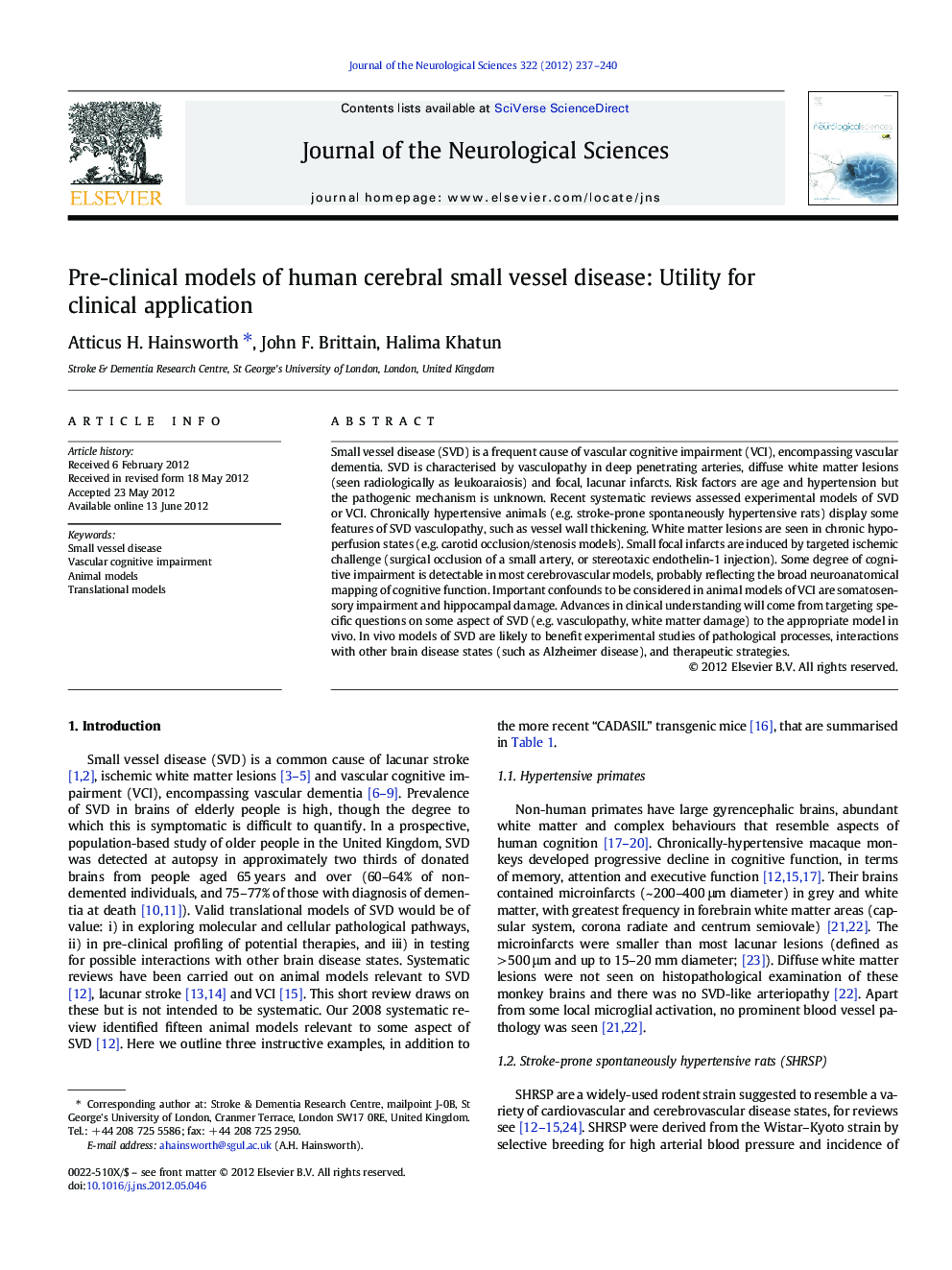| Article ID | Journal | Published Year | Pages | File Type |
|---|---|---|---|---|
| 8280321 | Journal of the Neurological Sciences | 2012 | 4 Pages |
Abstract
Small vessel disease (SVD) is a frequent cause of vascular cognitive impairment (VCI), encompassing vascular dementia. SVD is characterised by vasculopathy in deep penetrating arteries, diffuse white matter lesions (seen radiologically as leukoaraiosis) and focal, lacunar infarcts. Risk factors are age and hypertension but the pathogenic mechanism is unknown. Recent systematic reviews assessed experimental models of SVD or VCI. Chronically hypertensive animals (e.g. stroke-prone spontaneously hypertensive rats) display some features of SVD vasculopathy, such as vessel wall thickening. White matter lesions are seen in chronic hypoperfusion states (e.g. carotid occlusion/stenosis models). Small focal infarcts are induced by targeted ischemic challenge (surgical occlusion of a small artery, or stereotaxic endothelin-1 injection). Some degree of cognitive impairment is detectable in most cerebrovascular models, probably reflecting the broad neuroanatomical mapping of cognitive function. Important confounds to be considered in animal models of VCI are somatosensory impairment and hippocampal damage. Advances in clinical understanding will come from targeting specific questions on some aspect of SVD (e.g. vasculopathy, white matter damage) to the appropriate model in vivo. In vivo models of SVD are likely to benefit experimental studies of pathological processes, interactions with other brain disease states (such as Alzheimer disease), and therapeutic strategies.
Related Topics
Life Sciences
Biochemistry, Genetics and Molecular Biology
Ageing
Authors
Atticus H. Hainsworth, John F. Brittain, Halima Khatun,
